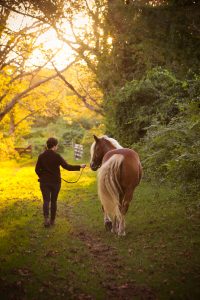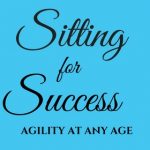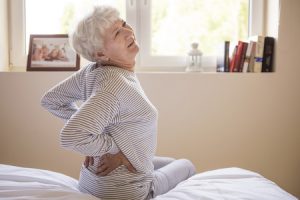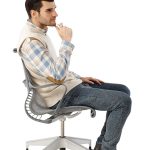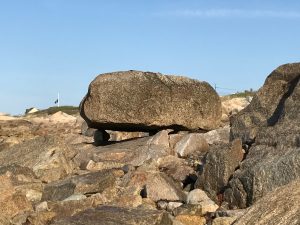
When I was a little kid there was a song that we sang in nursery school that makes me think of mindful movement. It went like this: “Head, shoulders, knees and toes, knees and toes. Head shoulders knees and toes, knees and toes. With your eyes and ears and mouth and nose. Head, shoulders, knees and toes, knees and toes!”
Because we think A LOT about the head, a lot about the shoulders, a lot about the knees and depending on the person a lot about the toes, it is the perfect song for Alexander Technique Teachers or anyone who practices the Alexander Technique. (If you don’t know about the Alexander Technique it is a mindfulness-based practice that teaches you how to move and live better.)
In fact, we think a lot about the whole body and how it moves through space. And if that isn’t enough we also think about the mind. In fact, we see absolutely no separation between the mind and the body. There is only mind/body unity so when you affect the body you affect the mind and when you affect the mind you affect the body!
I think that most of us don’t have really constructive ways to think about ourselves. Instead, if we think about ourselves at all, we think in very de-constructive, judgemental ways such as “am I too fat, am I too thin, am I too tall, am I too short etc.”
OUCH!This is not constructive thinking! This is not mindful movement.
The way that you think about yourself can change the way that you move, think, and react.
You can improve the way that you move by just thinking about yourself in a new and improved way. This is real mindfulness this is mindful movement.
So let’s learn new and constructive ways to think about yourself and practice mindful movement.
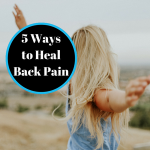
Head, Shoulders, Knees, and Toes!
- Heads up! Your head matters! Here is some knowledge. Your head rests on top of your spine but do you know the place where the head articulates with the spine? If you take your index finger and place it on the flap in front of your ears and place your thumb just behind your earlobe you can locate the place of articulation very deep in the skull. This is your atlanto-occipital joint. This is important because the way the head articulates with the spine determines how well you function. So paying attention to this articulation will improve the way that you move.
- “Sunshine On My Shoulders Makes Me Happy” sang John Denver and so it should, but the shoulders have so much to bear. How many of you out there have aching shoulders and bad necks? My experience has been that most people misunderstand how the shoulder moves. They think that the point of articulation is closer to the center of the upper chest otherwise known as your pecs. Often this is the case with someone with rounded shoulders. Instead, think of the shoulders’ movement originating much further out. If you take your finger and trace the top of your shoulder all the way to the top of the arm you will come to the juncture of the shoulder and the arm. This is where the arm moves best. Moving the arm in this way opens up the chest and prevents the sloping forward of the shoulders.
- Are knees important too? You bet! Bending at your ankles knees and hips is critical for agility and balance. As we age we tend not to move through these joints. Squats and lunges are a great way to reintroduce this mobility. To do a squat stand with your feet shoulder-width apart. Think of your head resting on top of the spine and think of letting go of tension in your neck, tongue, and jaw. Now bend at your ankles knees and hips as if you were to sit in a chair in an exaggerated way. Then stand up. Make this easy you do not have to muscle through this for it to be effective. Repeat several times. The better you get the lower you can go but ease into it. To do a lunge stand with your feet shoulder width apart then just step forward with one foot and then return to standing. Again repeat several times.
- Are you on your toes? Many people walk inefficiently with their toes up in the air. You definitely do this if you find that you are wearing a hole in the top of your socks, slippers or sneakers. When we walk well our weight strikes near the middle part of the heel, crosses the arch of the foot and continues to our big toe. The big toe has two jobs; it helps balance you and it propels you forward. So when you walk think of walking through the big toe. Now don’t overdo this. Allow it to happen. Allow your arms to swing. Think opposite arm to opposite leg!
- And last but not least. Stop trying- bringing too much effort to any given task tightens and shortens muscles and makes you less agile and flexible. Instead of trying harder to move tell yourself that you are going to allow yourself to perform a task. This is a mindset change. How you think about movement will actually change how you move. Your movement should be light, free and joyful.
How You Move Matters! You can learn how to move better with my Amazon bestselling book Agility at Any Age: Discover the Secret to Balance, Mobility, and Confidence. My book is illustrated with 40 videos that you access with your iPad or smartphone! You can purchase it here.
My name is Mary Derbyshire. I am a fitness and movement coach. My methodology is the Alexander Technique, a mindfulness-based practice that teaches you how to move better. When you move better you feel better and when you feel better your whole life improves! Let me know what you think or ask a question! I love to hear from my readers! Feel free to post in the comments section below.





